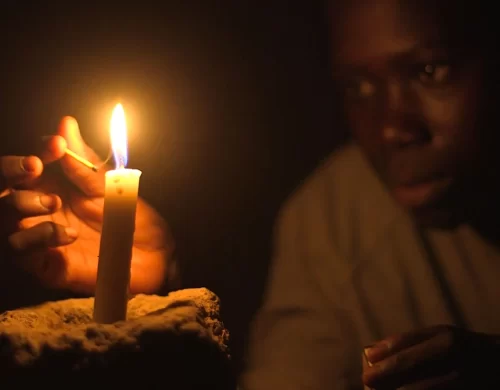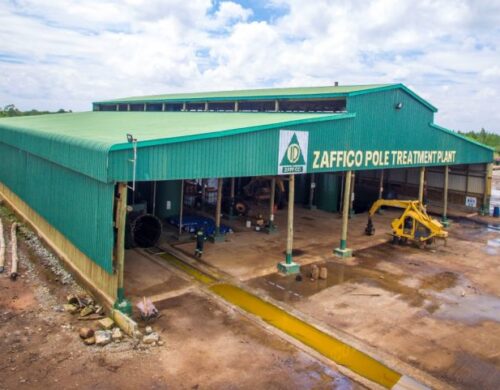By Donald Mumba
After much talk about pivoting to the west, the reality on the ground, the substance over form is that Zambia is still tapping China for major infrastructure projects. Whenever there is a major infrastructure financing need, it seems no western companies are capable of competing with their Chinese or Eastern bloc counterparts.
While the West seem to have won the minds of many in the ideological support for a semblance of democratic governance system that is practiced in Zambia, when it comes to economic realities on hard core infrastructure investments and financing, the Chinese have so far won the bids to do the three largest projects even under the new dawn administration.
It was initially thought that the western firms would come into Zambia in droves after the change of government in 2021, from the Patriotic Front – PF which was seen to be more leaning to the East and China to the United Party for National Development – UPND which was seen as leaning more to the West, alas, the situation on the ground seems like a continuation of the status quo as far as infrastructure financing and construction is concerned.
Take for instance the top three infrastructure projects so far confirmed in Zambia from the time the new dawn administration took over, we have seen a Chinese consortia winning the bid to do the Chingola – Kasumbalesa dual road project worth about USD32 million, we also saw the Chinese consortia again being awarded the tender to do the much awaited USD650 million Lusaka – Ndola dual carriage way road.
Another major economic project that has seen even President Hakainde Hichilema launch, was the USD600 million United Capital Fertilizer project to make Zambia self-sufficient in UREA fertilizers production and cut imports that should see the Kwacha end its November to March annual depreciation streak experienced when importing large quantities of fertilizers.
These are real tangible projects which even the most Sino skeptical locals can see, with their impact on the national economy clear for everyone who cares to see. Of course, what seems to have changed is the reduced skepticism of corruption in contract awards, overpricing accusations and China bashing by foreign diplomats in Zambia and western financed non-governmental organizations plying their trade in the country.
The bottom line is that the Chinese and the Eastern bloc have retained their reputation for execution, financial ability and technical know-how on executing projects at acceptable terms to ordinary folks in developing country like Zambia. Now, contrast this with the western support and economic support pledges.
The largest project that was expected after the takeover by the new dawn administration was on electric batteries manufacturing industry, it was taunted to worth in excess of USD15 billion for just the initial phase, but it is still on paper, not even land has been secured, no construction has started and no top ranking official seems to be able to give a proper update on when exactly this project will commence.
Most skeptics are now saying that this project was only made to hoodwink members of the public to look away from a leaning to the East based economic partnerships. Projections to increase copper production to over 3 million tons from the current about 800,000 tons by 2031 have still not been broken down to actual milestones or mines projected production figures that can be independently tracked, making the whole episode feel like an excuse for justifying the award of unjustified tax incentives.
The only tangible project from the western based companies we have seen is the launch of the USD30 million Mimbula mine. The other was the USD100 million enterprise Nickle mine which was projected to start earning about USD800 million per annum, but it’s difficult to confirm if these revenues ever touch the Zambian banking industry or forex market.
Yes, we do get announcements from Western countries of hundreds of millions of US dollars investments in the health sector but are these investments tangible, how much of that support actually comes into the Zambian economy? How much of it has ever been invested in local medicine and medical equipment manufacturing so that future self-sufficiency can be attained?
For Zambia, we need to be allowed to engage both the East and the West, tap the countries with the most efficient system in specific areas of economic and socio-cultural endeavor. Today, Zambia needs infrastructure to open up the country for full exploitation of its massive natural resources.
One important and urgent need for the new dawn government to not only outside for foreign direct investments, but how to avail local investment by having a local financial system that can provide affordable and competitive financing. Even most of these mines and projects that politicians think can only be done by foreign investors, can be done by local investors if a proper and working financial system is put in place.
The stock exchange – LuSE needs to start working for local investors and SMEs, banks and micro financiers need regulatory guidance and support to back local businesses. Only then will the demographic dividend and youth unemployment be tackled. There is no country that has ever successfully outsourced its development agenda. Only Zambians and local businesses can meaningfully and sustainably develop Zambia.
About the Author; Donald Mumba is the Managing Editor and Director of the Zambian Business Times – ZBT. For comments and contributions email: donald.mumba@zambianbusinesstimes.com
Picture below is Zambia’s President HH and Zhang Jinyue, Vice President for Wuhuan Engineering Company during the launch of the construction of United Capital Fertiliser plant.





